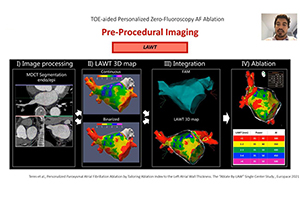Diego Penela, Giulio Falasconi, Giulio Zucchelli
AbstractAtrial fibrillation (AF) is the most common arrhythmia in the adult population and catheter ablation has emerged as an important rhythm-control strategy and is the most common cardiac ablation procedure performed worldwide. The antiarrhythmic drugs have demonstrated moderate efficacy in long-term maintenance of sinus rhythm; moreover, they are often not tolerated and are associated with adverse events. Catheter ablation has proven to be effective in treating AF, although long-term outcomes have been significantly less favorable in persistent AF than in paroxysmal. The current guidelines recommend catheter ablation as class I indication for patients whom antiarrhythmic drugs have failed or are not tolerated, and as first-line rhythm-control therapy in selected patients with symptomatic AF. Advances in technology and innovative ablation protocols resulted in a remarkable improvement of the efficacy outcomes after pulmonary vein isolation. This review seeks to provide an updated report of the current practices and approaches, and to describe the latest advances in technology that aim to improve procedural safety, efficacy and to reduce procedural requirements in terms of duration and fluoroscopy exposure.
Cover
留言 (0)